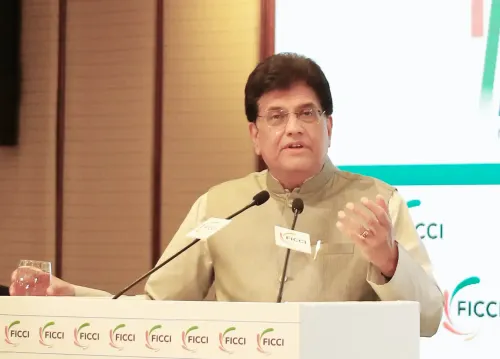Will India’s Infrastructure Market Reach Rs 25 Lakh Crore by 2030?

Synopsis
Key Takeaways
- India is entering a significant infrastructure super-cycle.
- Nifty Infrastructure Index has outperformed Nifty 50.
- Growth is driven by government and private sector investments.
- Infrastructure capex yields substantial GDP impact.
- InvITs provide stable income streams.
New Delhi, Nov 25 (NationPress) India is embarking on a significant multi-year infrastructure super-cycle, as noted in a report released on Tuesday. The Nifty Infrastructure index has yielded returns that are twice those of the Nifty 50 over the last three years.
The infrastructure equities in India have transitioned from being defensive to exhibiting high-beta and high-alpha characteristics, potentially growing to a market value of approximately Rs 25 lakh crore by 2030, according to the report from Smallcase.
Analysts attribute this growth to a combination of government expenditure and a revival in private capital expenditures, bolstered by Production Linked Incentive (PLI) schemes, global supply-chain realignments, and manufacturing incentives.
Smallcase has estimated that every Rs 1 invested in infrastructure capital expenditure results in an economic impact of about Rs 2.5 to Rs 3 on the GDP.
The market is expected to maintain a high beta in relation to infrastructure execution, with robust earnings visibility across sectors such as engineering, construction, industrials, cement, power equipment, and logistics, the report highlights.
The growth of Infrastructure Investment Trusts (InvITs) will be supported by stable, contract-based revenue streams that provide pre-tax yields of around 10-12% and post-tax returns of about 7-9%, typically outperforming many traditional fixed-income investments.
Over the past 1, 3, and 5 years, the Nifty Infrastructure Index has posted returns of 14.5%, 82.8%, and 181.2% respectively, surpassing the Nifty 50’s returns of 10.5%, 41.5%, and 100.3%.
“While investments in infrastructure in India can experience temporary fluctuations during uncertain market conditions, their historical volatility of approximately 10.2% is significantly lower than the equity market’s 15.4%, resulting in a more stable performance,” said Abhishek Banerjee, an Investment Manager at Smallcase and founder of LotusDew.
With a correlation of merely 0.42 to equities, infrastructure platforms behave similarly to utilities, generating consistent, inflation-indexed income that is largely insulated from economic fluctuations, he added.









